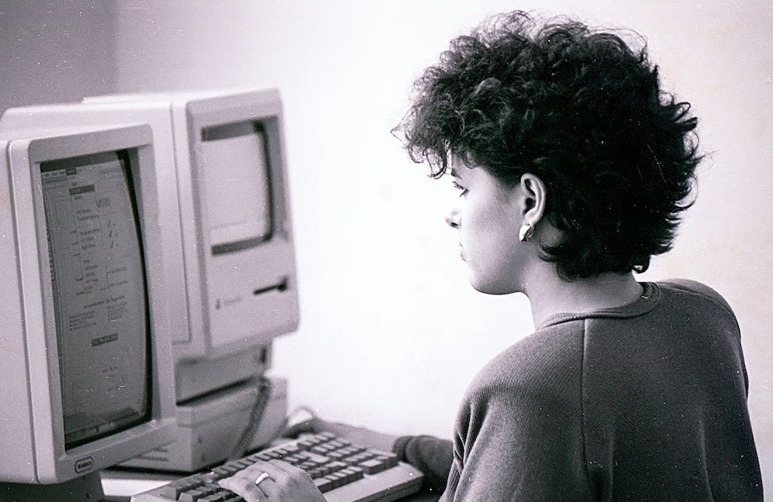Trading has undergone a remarkable transformation over the decades, primarily due to the evolution of the trading computer - from bulky, basic machines to sophisticated, high-speed systems. Trading Computers have been updating the most optimal builds every year to keep pace with the rapidly changing demands of the financial markets. This journey through time will explore the significant milestones and technological advancements that have shaped the modern trading computer, illustrating how these developments have revolutionized the world of trading.
The Early Days of Trading Technology
In the nascent stages of electronic trading, the first trading computers emerged as rudimentary tools compared to today's standards. These early systems, which marked the transition from manual to electronic processes, were revolutionary despite their limited capabilities. With basic processing power and minimal data handling abilities, they laid the foundation for what would become a technologically driven trading era. This period set the stage for future innovations and was a critical turning point in the history of financial trading.
The Rise of the Internet and Online Trading
The 1990s ushered in a significant shift with the advent of the internet, fundamentally changing how trading was conducted. Online trading platforms emerged, allowing traders to execute trades from anywhere in the world. This period was characterized by the transition from floor to electronic trading, drastically altering the landscape of the trading computer market. The internet era not only democratized trading but also spurred the need for more powerful and sophisticated trading computers to handle the increasing volume and speed of online transactions.
The 2000s: A New Era of Sophistication
During the 2000s, trading computers evolved rapidly to accommodate advanced trading practices like high-frequency and algorithmic trading. These methods required unparalleled speed and processing power, pushing the boundaries of computer technology. This era saw the introduction of ultra-fast processors and sophisticated software, enabling traders to execute complex strategies at unprecedented speeds. The rise of day trading and the proliferation of electronic markets were direct outcomes of these technological advancements.
The Role of Software in Trading Computers
As hardware advanced, the role of software in trading computers became increasingly significant. Trading software evolved to include complex algorithms, automated systems, and predictive analytics tools. These advancements transformed trading strategies, necessitating more powerful computers to handle intricate calculations and real-time data analysis. Software development paralleled hardware improvements, creating a synergistic effect that enhanced the overall efficacy and efficiency of trading computers.
The Advent of Mobile and Cloud Trading
The late 2000s and early 2010s witnessed the rise of mobile and cloud trading, introducing a new dimension to trading computers. Mobile trading allowed traders to access markets from handheld devices, while cloud computing provided the flexibility to trade from any location. These innovations demanded that trading computers become more versatile and connected, facilitating a seamless transition between traditional desktop trading and the emerging mobile and cloud-based platforms.
Current Trends in Trading Computers
Today, trading computers are at the forefront of technological innovation, incorporating AI, machine learning, and big data analytics. Modern systems are designed to process vast amounts of data in real-time, enabling traders to make more informed decisions quickly. The current trend is towards speed, efficiency, and accuracy, with trading computers constantly evolving to meet the ever-increasing demands of the global financial markets.
The Future of Trading Computers
Looking ahead, the future of trading computers seems bound for even more groundbreaking advancements. Quantum computing, further developments in AI, and enhanced cybersecurity are likely to shape the next generation of trading technology. These future technologies promise to revolutionize trading strategies and market dynamics, further elevating the role of the trading computer in the financial world.
Impact on Traders and the Market
The evolution of trading computers has profoundly impacted traders and the market at large. From retail traders to institutional investors, the advancements in trading technology have democratized market access and transformed trading strategies. The speed and efficiency of modern trading computers have altered market dynamics, enabling faster transactions and more sophisticated trading techniques, shaping the financial markets of today and tomorrow.
Conclusion
The journey of trading computers from their inception to the present day is a testament to the relentless pace of technological advancement in the trading world. These machines have evolved from basic electronic tools to sophisticated systems capable of complex analyses and rapid executions. As we look to the future, trading computers will undoubtedly continue to play a pivotal role in shaping the financial markets. Their ongoing evolution will be closely tied to the broader trends in technology, promising a future where speed, efficiency, and intelligence define the next frontier in trading.


No comments yet